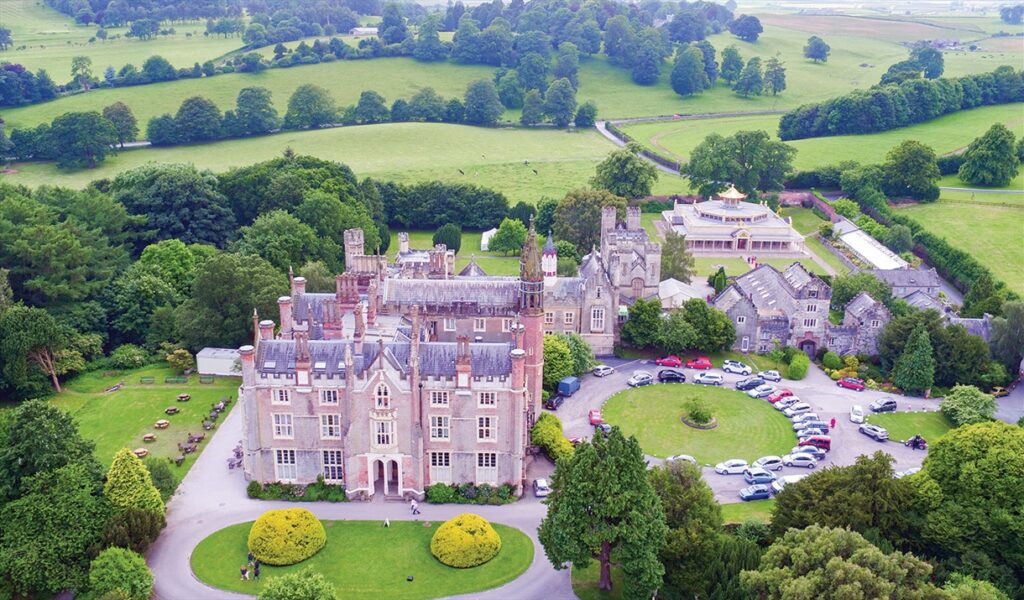

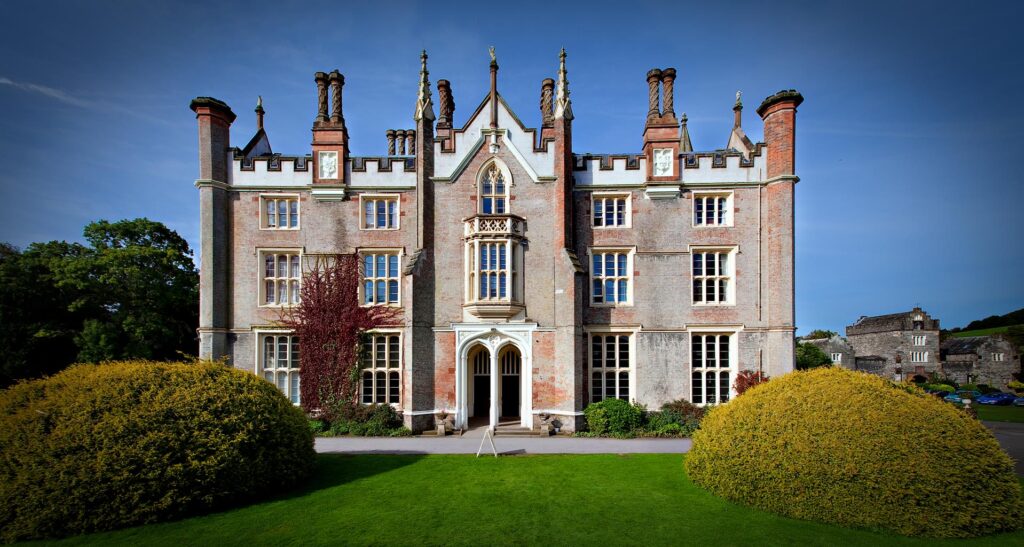
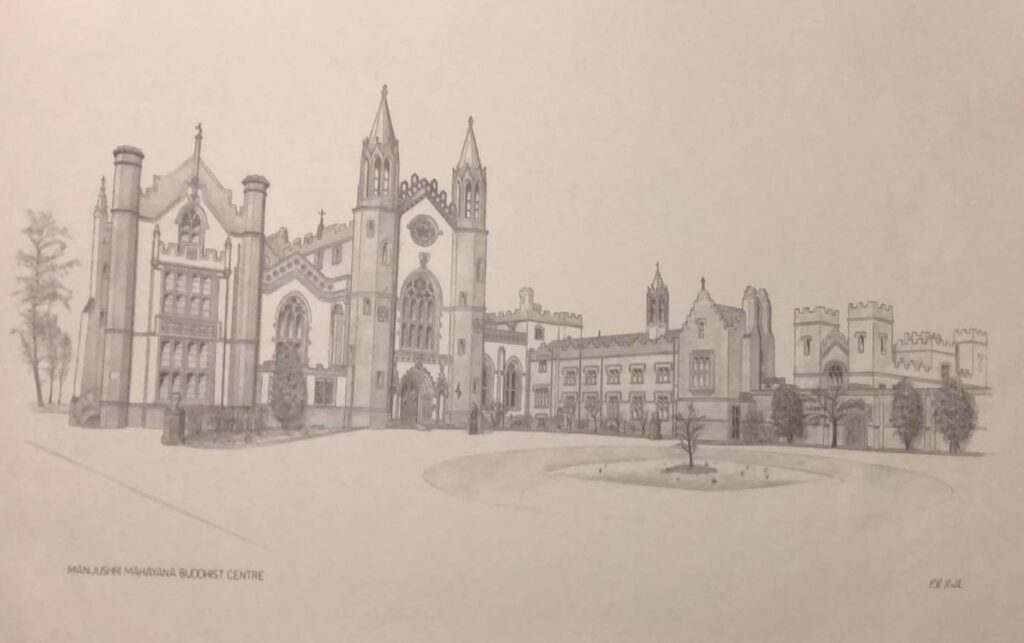
Nestled amidst the beauty of the Lake District, Conishead Priory offers a fascinating journey through time. Today, it’s home to the Manjushri Kadampa Meditation Centre, a Buddhist retreat, and the impressive Gothic Revival country house that stands at the heart of the estate. But beneath the grandeur of the manor house and its well-kept lawns, the foundations of a 12th-century Augustinian Priory lie hidden, waiting to be discovered.
The story of Conishead Priory begins in 1160 when Gamel de Pennington, a local lord from Pennington Castle, established a hospital for the poor of the Ulverston area. Monks from the Order of St. Augustine were entrusted with running the hospital, and they also founded a school to educate the children of the local community. The humble hospital’s growth led to it being elevated to the status of a Priory in 1188, dedicated to the Virgin Mary. A relic—a girdle of the Virgin Mary—was kept at the Priory and became a significant draw for pilgrims.
As the Priory gained land and rights, conflict inevitably arose with the nearby Furness Abbey, an ever-growing powerhouse in the region. The monks of Furness Abbey were not pleased with a new priory taking land and tithes from areas they could potentially cultivate. Tensions between Conishead and Furness escalated over the years, but in 1338, King Edward II granted Conishead a royal charter, confirming all earlier land grants and putting an end to the disputes. It’s hard to say whether the monks of Furness Abbey ever truly accepted the existence of this new rival, but the conflict was formally resolved.
Sadly, Conishead Priory’s flourishing existence was cut short in the mid-1500s. As part of the infamous ‘Act for the Dissolution of the Lesser Monasteries,’ Conishead was dismantled. The monks were removed, and the lead from the Priory’s roofs was stripped and sold, while the walls were torn down, leaving the site almost completely empty. Today, when you visit, it’s hard to find any visible remnants of the medieval priory. No crumbling walls or markings remain to give a sense of its original size or structure. However, thanks to archaeological excavations, we know that the Priory church was located beneath the south lawn of the current manor house. The church was built in a typical cruciform shape, with a nave 100 feet long and transepts crossing the nave. The Priory’s domestic buildings are believed to lie beneath the present-day manor house, although these areas remain inaccessible for further study.
It’s a pity that so little of the original Priory remains, as it must have been a tranquil and beautiful place in its time. I couldn’t help but imagine how peaceful it must have been for the Augustinian monks who lived and worked here. Standing in the grounds today, I felt the weight of history, though the landscape now exudes a quiet serenity, far removed from the hustle and bustle that must have characterised the Priory’s heyday.
After the Priory’s dissolution, the estate passed into the hands of Lord Mounteagle, who used the remaining stones of the Priory to construct a new country house. Over the centuries, the estate changed hands many times, eventually falling into the ownership of the Braddyll family. The Braddylls lived at Conishead for almost two centuries, and it was in 1821 that Colonel Thomas Braddyll, the High Sheriff of Lancashire, decided to make a significant change to the house. He hired architect Philip Wyatt to design a completely new manor house, one that would stand as a monument to Braddyll’s wealth and status.
The result was a striking Gothic Revival building, completed in 1836, which featured distinctive octagonal towers rising 100 feet into the air. These towers are perhaps the most recognisable feature of Conishead Manor, and their impressive stature makes the house stand out not just in the surrounding grounds, but in the broader landscape as well. The blend of architectural styles makes the manor house a truly unique structure, one that still captivates visitors today.
However, Colonel Braddyll’s fortune did not last. In 1848, he was declared bankrupt and was forced to sell the estate. Conishead once again passed through various hands, and by the late 19th century, it was converted into a hydropathic hotel, known as ‘The Paradise of Furness.’ The hotel could accommodate 240 guests and offered a range of luxurious amenities, including a large library, tennis courts, pleasure boating, and salt baths. It became a popular destination for guests seeking both relaxation and rejuvenation.
In August 1930, the estate’s use shifted once more when it was officially opened as a convalescent home for Durham coal miners, under the ownership of the Durham Miners Welfare Committee. The mansion served as a sanctuary for those who had become ill from the strenuous and dangerous conditions of their work. During the Second World War, Conishead was requisitioned by the military and transformed into the largest hospital in the North, where it cared for thousands of patients during the war years.
Today, Conishead Priory is a peaceful retreat, once again serving as a place of reflection and tranquillity. The Manjushri Kadampa Meditation Centre, now housed in the former country house, is a hub of spiritual activity. The former walled garden of the house now holds a beautifully decorative Buddhist temple, and the grounds are meticulously cared for, offering visitors a tranquil space for meditation and contemplation.
I had the privilege of visiting Conishead to conduct some research, and it was a truly memorable experience. The gentle scent of freshly cut grass and the quiet murmur of the nearby stream added to the serenity of the day. I started by enjoying a wonderful coffee and a slice of cake in the café, the warmth of the coffee creating a comforting contrast to the cool morning air. Afterward, a lovely lady at the information desk offered to show me around. She was incredibly kind and knowledgeable, helping me take some ‘before and after’ photos from the Sankey collection, which allowed me to see how the site has transformed over the years.
While walking around the estate, I couldn’t help but reflect on the many different people who had passed through these grounds—the Augustinian monks, the Braddyll family, hotel guests, miners, and now, the Buddhist monks. It’s remarkable how Conishead has adapted and transformed over the centuries, yet it still retains an undeniable sense of peace and history. Whether you’re interested in the site’s rich history, its architectural beauty, or simply the tranquil atmosphere, Conishead Priory offers something for everyone.
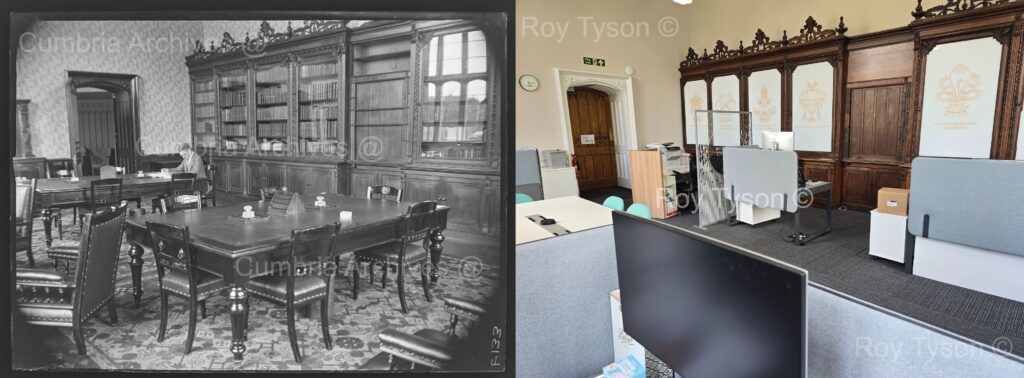
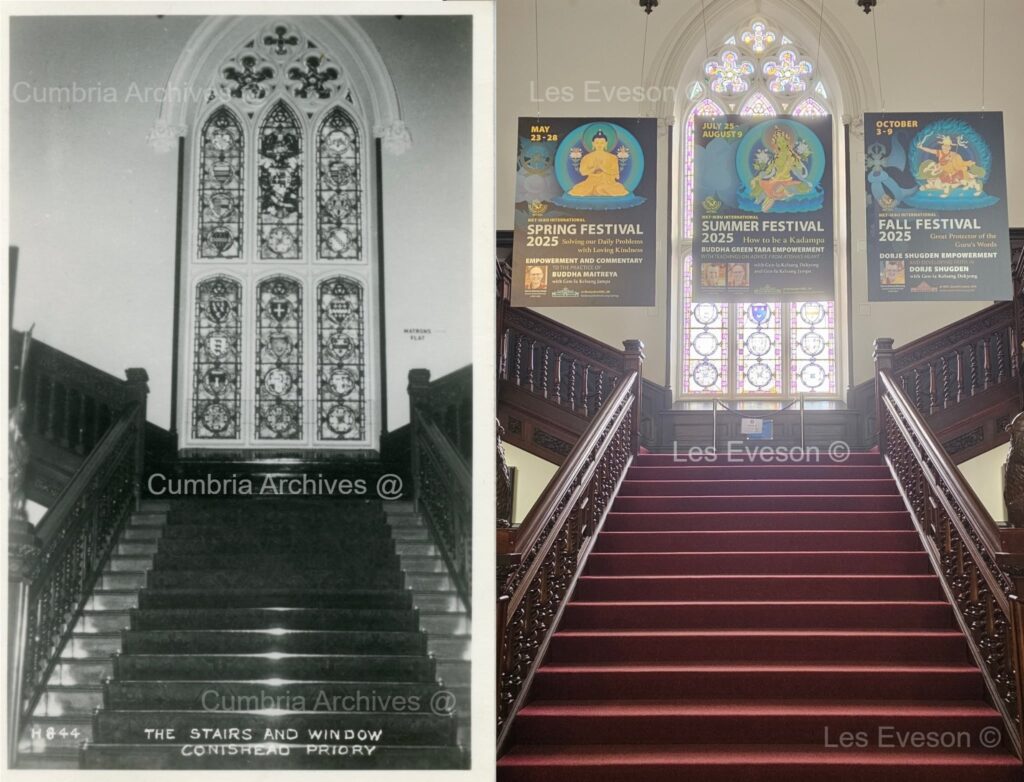
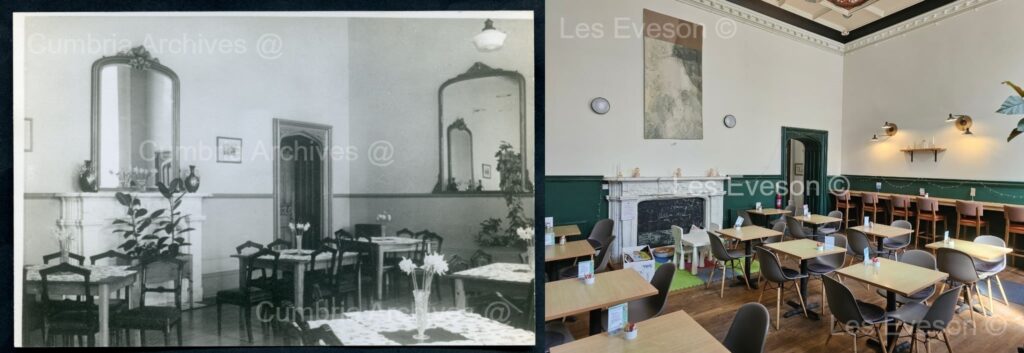

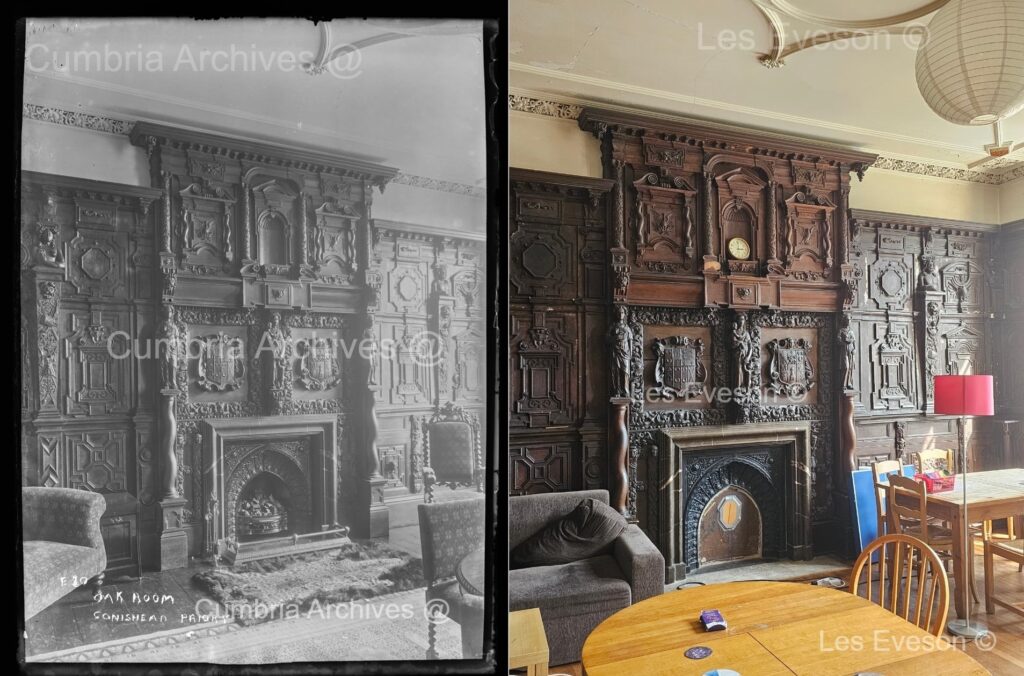


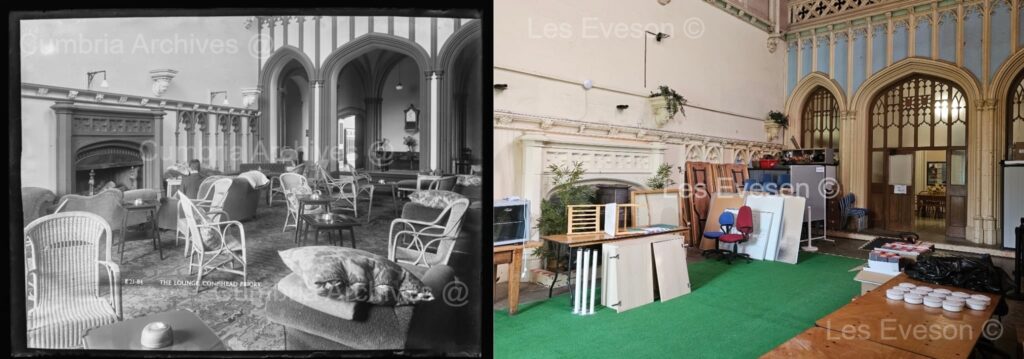
A special thank you to Roy Tyson, administrative assistant at Conishead Priory, for kindly taking the time to send me a recent photograph of the managers’ office. It was the final piece needed to complete our ‘before and after’ set from the Sankey collection. Seeing that room today—with its worn wood, soft light, and familiar details—brought a quiet satisfaction. It’s comforting to know that elements from around the 1950s still remain at the Priory, quietly linking us to its more recent past.
ConisheadPriory #LakeDistrict #BuddhistRetreat #ManjushriKadampaMeditationCentre
#HistoricalSites #MedievalHistory #GothicRevival #Architecture #HistoryLovers #PeacefulRetreat #AugustinianMonks #SankeyCollection #CulturalHeritage #HistoricEngland #TravelBlog #UKHistory #HeritageSite #MonasticHistory #ResearchJourney #HiddenHistory

